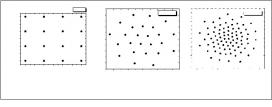New Multinary Modulation Promises To Double and Triple Data Rates Across Optical Networks
Researchers have devised a new optical coding and modulation technique that could double or triple the speed at which data flows through optical cables. Working at the Center for Integrated Access Networks (CIAN), an NSF-funded Engineering Research Center (ERC) with headquarters at the University of Arizona, the team devised a modulation approach that uses multiple conditions to encode data, a multinary encoding, that goes beyond the on-off encoding of binary modulation.
Fast-growing demand for streaming and mobile data is forcing data networks up against theoretical and practical limits for transmitting data across optical and copper networks. The CIAN team led by Professor Ivan Djordjevic at the University of Arizona developed a new spectral and energy-efficient optical coding and modulation technique that may enable data rates of 1 Pb/s, at a time when the most-recently adopted standard is for 100Gb/s Ethernet (100GbE).
Looking beyond today’s data rate of 100GbE, standards are being studied to achieve 400GbE and 1Tb/s Ethernet (1TbE). Despite these efforts, future optical transport networks will be limited in their bandwidth because of information infrastructures, excess power consumption, heterogeneity of network segments, and security issues.
In the methodology, all available degrees of freedom were used to convey information over spatial domain multiplexing schemes. The new method can be used with energy-efficient, signal-constellation designs, spectral multiplexing, polarization-division multiplexing, and orthogonal-division multiplexing to produce serial optical transmission rates greater than 1Pb/s.



